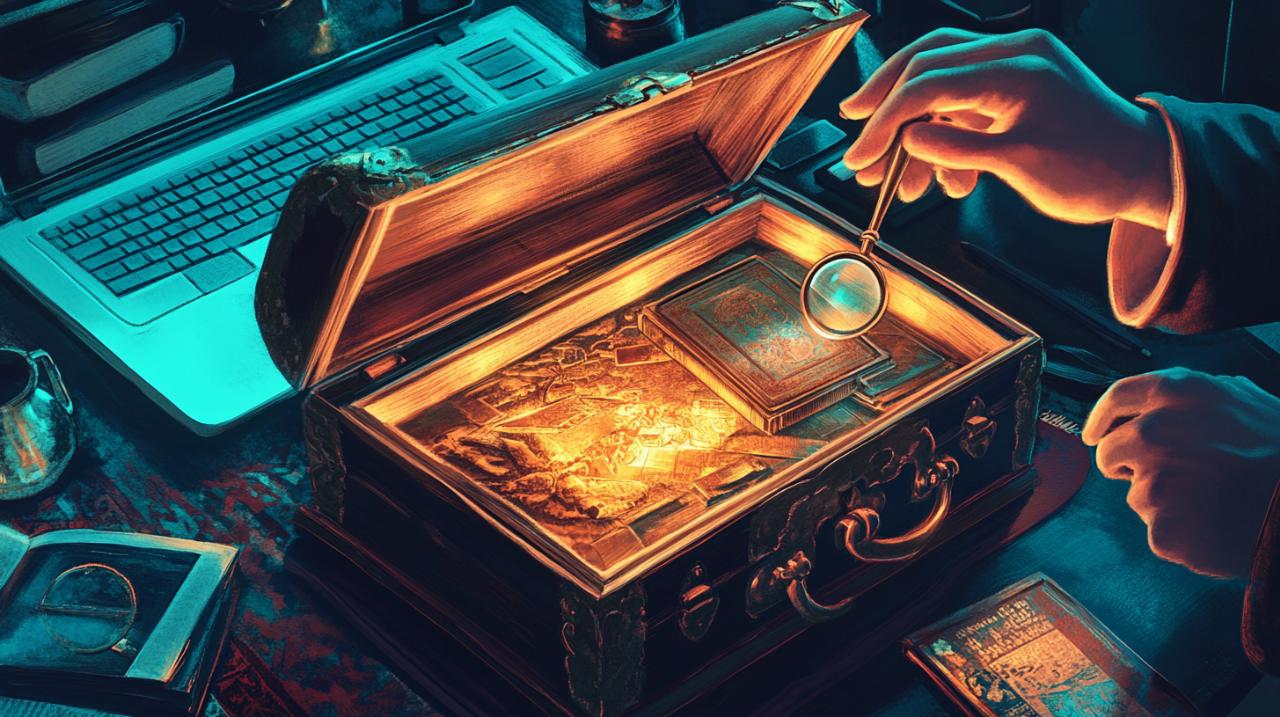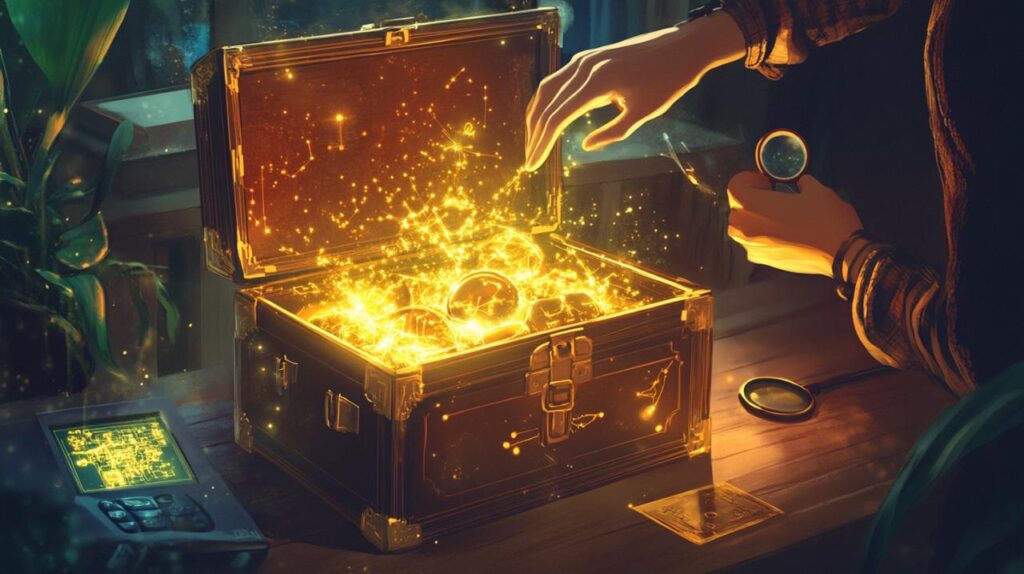Many of us have attics, cupboards, and spare rooms filled with family possessions that have been handed down through generations. Whilst these items often hold sentimental significance, some may also possess considerable monetary value. The challenge lies in distinguishing between everyday keepsakes and genuinely valuable pieces that could be worth a substantial amount of money. With a bit of knowledge and effort, you can uncover hidden gems amongst your family collections and make informed decisions about their future.
Starting your search: recognising potential treasures amongst your heirlooms
Having a Good Rummage: Where to Begin Your Hunt
The first step towards discovering valuable items is to thoroughly examine every nook and cranny of your home. Do not overlook attics, garages, garden sheds, or storage spaces, as these areas often harbour forgotten belongings that could be worth a pretty penny. It is essential to approach this task methodically, setting aside time to look through boxes, trunks, and cupboards that may have remained untouched for years. Antique furniture crafted from quality materials, particularly pieces from the Victorian or Art Deco era, can be highly desirable. Similarly, old books with first editions or decorative covers, as well as musical instruments made by renowned craftsmen using traditional techniques, might hold significant value.
When conducting your search, pay attention to items that appear aged or distinctive. Vintage jewellery, collectible toys in good condition, and even old concert tickets or pre-1970s magazines can fetch decent prices. Many people successfully identify hidden treasures in family heirlooms by taking the time to examine items carefully and researching their origins. Old toys such as Barbies, Matchbox cars, and Pokemon cards are especially sought after when they remain in excellent condition. Additionally, designer watches from brands like Rolex, Breitling, and Omega are consistently valuable, as are mid-twentieth-century furniture pieces and vintage clothing from designers such as Mary Quant and Vivienne Westwood.
Spotting the Telltale Signs: Hallmarks, Signatures, and Maker’s Marks
Once you have gathered items of interest, the next task is to look for identifying marks that can provide clues about authenticity and worth. Hallmarks on silverware, stamps on pottery, and maker’s marks on furniture are all indicators of origin and quality. These small details can significantly affect the value of an item, so it is worth examining pieces closely, even using a magnifying glass if necessary. For example, antique silver treasures such as cutlery, lighters, hip flasks, and thimbles often bear hallmarks that reveal their age and the reputation of their maker.
Similarly, designer brands leave distinctive marks on their products. Antique boxes from Tiffany & Co., Cartier, and Asprey are particularly desirable, whilst antique luggage from Louis Vuitton, Goyard, and Hermes can command impressive prices. When inspecting jewellery, look for stamps indicating precious metals or unique design features that suggest a specific period, such as Victorian, Edwardian, Art Deco, or Art Nouveau styles. Brooches, cameos, and bakelite pieces from these eras are highly collectible. Even items that appear damaged or incomplete can hold value; broken gold jewellery, coins, and decorative items are still worth assessing due to their material content.
Understanding worth: getting your family heirlooms properly valued
Seeking professional opinions: visiting antiques shops and auction houses
After identifying items that appear promising, it is advisable to seek professional opinions to obtain accurate valuations. Antiques shops and auction houses employ experts who can assess the history, rarity, and market demand for various items. A professional appraiser will consider factors such as age, condition, provenance, and current trends to provide a precise and objective valuation. This step is crucial, as it prevents you from undervaluing or overestimating the worth of your possessions.
Auction houses are a popular choice for selling valuable antiques, though they typically charge a commission, which is a percentage of the final sale price. Despite this fee, auctions can attract serious collectors and achieve higher prices due to competitive bidding. Alternatively, local antique shops may offer to purchase items outright, providing a quicker sale, though the price may be lower than what an auction might achieve. It is wise to obtain multiple valuations before making any decisions, as different experts may have varying opinions based on their knowledge and market experience.

Doing your homework: researching similar items online
In addition to professional appraisals, conducting your own research online can provide valuable insights. Websites such as eBay allow you to search for similar items and examine recent sale prices, giving you a rough idea of market value. Online marketplaces and antique guides also offer useful information about specific categories, whether you are interested in antique clocks from renowned brands like Howard Miller, Herschede, and Ridgeway, or vintage binoculars from makers such as Zeiss, Leica, Selsi, and Kendon.
Using search apps and online databases, you can explore the characteristics that make certain items desirable. For instance, antique coins and banknotes, including old decimals, farthings, halfpennies, and Irish coins, can be surprisingly valuable depending on their rarity and condition. Similarly, antique militaria such as medals and uniforms from historical conflicts attract collectors and historians alike. Researching these items online before consulting a professional ensures that you have a foundational understanding of their potential worth, enabling you to ask informed questions and avoid any unpleasant surprises.
Beyond the Price Tag: Balancing Monetary and Sentimental Value
The importance of family history: how provenance affects worth
Whilst monetary value is important, it is equally essential to consider the history and sentimental significance of family heirlooms. Provenance, which refers to the documented origin and ownership history of an item, can greatly enhance its value. Knowing the story behind a piece, such as which family member owned it or the circumstances under which it was acquired, adds depth and interest for potential buyers. For example, a Rolex watch accompanied by its original box and service history recently sold for just under thirty thousand pounds, illustrating how provenance can dramatically increase desirability.
Items with a clear and compelling history are often more appealing to collectors, museums, and auction houses. If your family heirlooms come with letters, receipts, photographs, or other documentation, these materials should be preserved and presented alongside the items. Even anecdotes passed down through generations can contribute to an item’s narrative, making it more than just a physical object. This context can transform a simple heirloom into a piece with cultural or historical significance, thereby increasing its market appeal.
When memories matter most: recognising priceless sentimental treasures
Before deciding to sell any family heirloom, it is vital to weigh the sentimental value against the potential financial gain. Some items are irreplaceable because of the memories and emotions they evoke, and no amount of money can compensate for their loss. Consider whether the item holds special meaning for you or other family members, and discuss your intentions with relatives to ensure that everyone is comfortable with any decisions made.
There are occasions when preserving an item as a family treasure is the most appropriate course of action, even if it could fetch a substantial sum at auction. In other cases, you may decide to donate valuable items to museums or cultural institutions, where they can be enjoyed and studied by future generations. This option allows you to honour the legacy of your family whilst contributing to the preservation of history and culture. Ultimately, the decision to sell, keep, or donate should reflect both the financial and emotional value of the heirloom.
Maximising value: preserving and presenting your heirlooms
Condition Matters: The Impact of Wear and Tear on Value
The condition of an item is one of the most critical factors influencing its value. Pieces that are well-preserved and free from damage are far more desirable to collectors and buyers. When assessing your heirlooms, look for signs of wear such as scratches, dents, staining, or moth damage in textiles. Vintage clothing, for instance, should be checked carefully for any deterioration that could affect its resale value. Items in mint condition or with minimal signs of use will command higher prices than those showing significant wear.
For certain categories, such as antique garden tools, the current trend towards vintage aesthetics has increased demand, making even well-used items desirable. However, general wear and tear should be minimised wherever possible. Proper storage and handling can prevent further damage, so consider keeping valuable items in climate-controlled environments away from direct sunlight, moisture, and pests. Taking photographs of items in their current state is also advisable, as this provides a record of their condition at the time of valuation or sale.
Restoration done right: avoiding repairs that diminish worth
Whilst it may be tempting to repair or restore damaged items, it is crucial to proceed with caution. Poorly executed repairs can diminish the value of an antique or collectible, as buyers often prefer items in their original state, even if they show signs of age. Before undertaking any restoration work, consult a professional conservator or restorer who specialises in the type of item you own. They can advise on the best course of action and ensure that any work carried out is sympathetic to the original craftsmanship.
In some cases, leaving an item in its current condition is the wisest choice, particularly if the damage is minor and does not affect the overall integrity of the piece. Collectors and dealers often appreciate the authenticity of untouched items, as these reflect their true history and age. If restoration is necessary, ensure that it is documented and disclosed to potential buyers, as transparency about any alterations will maintain trust and may even add to the item’s provenance.
Unexpected Finds: Discovering Value in the Most Unlikely Places
Thinking outside the box: items that surprise collectors
Some of the most valuable discoveries come from items that initially appear mundane or insignificant. Vintage technology, such as Singer sewing machines and Marantz amplifiers, can be highly sought after by enthusiasts and collectors. Similarly, everyday items like Blue Danube dinnerware or certain types of glassware may hold unexpected value due to their rarity or historical significance. Even broken or incomplete pieces, particularly those made from precious materials like gold or silver, can be worth assessing for their intrinsic material value.
Old concert tickets, vintage magazines from before the nineteen seventies, and even certain types of packaging or advertising memorabilia can attract niche collectors. The key is to approach your search with an open mind and not to dismiss items simply because they seem ordinary. What may appear to be clutter in your attic could be a hidden treasure to someone with a passion for a particular period, style, or brand. By thinking outside the box and considering the broader context of collecting trends, you can uncover value in the most unlikely places.
Niche markets: finding buyers for unusual family keepsakes
Once you have identified unusual or specialised items, the next challenge is to find the right buyers. Niche markets exist for almost every category of collectible, from militaria and rare books to vintage tech and designer brands. Online marketplaces, specialist forums, and collector groups can connect you with individuals who have a specific interest in your items. Social media platforms and dedicated websites also provide opportunities to reach a global audience, increasing the likelihood of finding a buyer willing to pay a fair price.
When selling to niche markets, it is important to present your items accurately and honestly. Provide detailed descriptions, high-quality photographs, and any relevant documentation or provenance information. Transparency about condition, history, and any repairs or alterations will build trust and help you achieve the best possible outcome. Additionally, be prepared to negotiate and consider multiple offers, as different buyers may value the same item differently based on their personal interests and collecting goals. By targeting the right audience and presenting your heirlooms professionally, you can maximise their value and ensure they find appreciative new owners.

